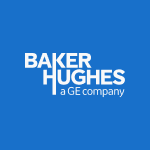Baker Hughes Q2 2023 Earnings Report
Key Takeaways
Baker Hughes reported strong second-quarter results with a 25% increase in revenue year-over-year, driven by higher volume in both Industrial & Energy Technology (IET) and Oilfield Services & Equipment (OFSE) segments. The company maintained strong order momentum in IET and OFSE, particularly within Subsea & Surface Pressure Systems (SSPS), and generated $623 million in free cash flow.
Orders increased by 28% year-over-year, reaching $7.5 billion.
Revenue rose by 25% year-over-year to $6.3 billion.
Net income attributable to Baker Hughes Company was $410 million, a significant increase year-over-year.
Free cash flow for the quarter was $623 million.
Baker Hughes
Baker Hughes
Baker Hughes Revenue by Segment
Revenue by Segment
Forward Guidance
Baker Hughes maintains a constructive outlook for global upstream spending in 2023, expecting market softness in North America to be offset by strength in international and offshore markets. The company is confident in the LNG outlook, anticipating solid demand growth led by Europe and Asia, and expects the LNG market to exceed 65 million tons per annum (MTPA) of FIDs this year with a similar level of activity in 2024.
Positive Outlook
- Constructive outlook for global upstream spending in 2023.
- Strength in international and offshore markets offsetting North America softness.
- Confident in the LNG outlook with solid demand growth from Europe and Asia.
- LNG market expected to exceed 65 million tons per annum (MTPA) of FIDs this year.
- Potential for the LNG cycle to extend for several years with new international opportunities.
Challenges Ahead
- Growing economic uncertainty continues to drive commodity price volatility globally.
- Lower oil prices over the first half of the year.
- Market softness expected in North America.
- Cost inflation in both segments.
- Higher equipment mix and higher R&D spend.

